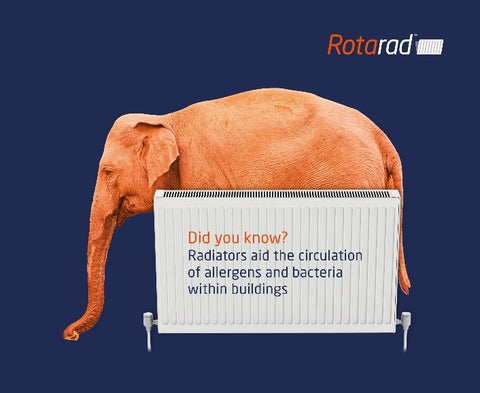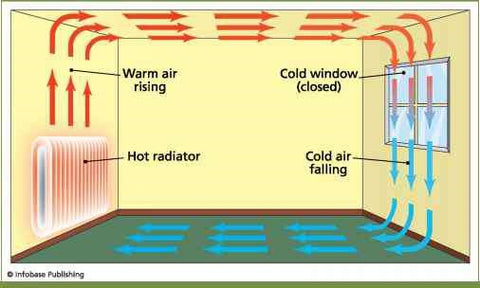
Tips To Avoid Dust And Dirt In Your Home
Homes have become airtight and poorly ventilated trapping dust indoors, resulting in dust build-up on most surfaces around the home that are visible and accessible to clean.
While cleaning the entire house, including the floors, carpets, furniture, walls, kitchen countertops and bathroom tiles, make sure you focus on the dust that is not visible:
See blog – Are Dustmites harmful

- Underneath the kitchen appliances – Don’t ignore the areas behind and underneath the refrigerator, microwave or dishwasher when it comes to removing dust. The tight spaces under appliances gather layers of dust, dirt, grime and crumbs!
Use a vacuum cleaner with an extendable attachment to wipe down the dust under the kitchen appliances. Use a damp cloth to wipe down the sides, bottom and floor of your refrigerator. You can repeat this with the oven, microwave, dishwasher and washing machine.

- Door Frames, high-level shelving, tops of cabinets and cupboards - The places like door frames are hard-to-reach places so can easily be forgotten to clean. If you want a tidy and dust-free home environment, keep your door frames, cabinets, cupboards and shelving clean.
Use a feather duster or a microfiber cloth to wipe the sides, top and whole surface of door frames and shelves to remove accumulated dust and dirt.

- Sofas and Beds – again these are also overlooked places when cleaning your house. If you look under the sofa or bed, you will undoubtedly find a thick layer of dust that has gathered.
Use a vacuum cleaner with an extendable attachment to get underneath the bed, the same applies to the sofa.

- Electrical appliances - Computers, laptops, television, phones and keyboards also need dusting when you are cleaning your home. These are dust magnets and can quickly breed germs and bacteria.
Wipe down with a damp microfiber cloth and warm water. Remove the dust and wipe behind and underneath television, speakers and computers. Use a flexible feather duster to clean the gaps between your keyboards.

- Curtains and blinds - Don’t forget to dust down your window blinds and wash your curtains while cleaning your windows. Curtains and blinds collect dust, pollen and even mould and mildew.
Dust down your window blinds and wash your curtains in the washing machine or send to a specialist dry cleaning company. For the blinds, you can use at three-blade microfiber duster to collect the dirt from those hard to reach gaps.

- Toothbrush Holder!! - Whenever you clean your bathroom make sure you thoroughly clean up your toothbrush holder, this is one thing that a lot of people forget to clean which accumulates a thick layer of dust and dirt.
Remove all the toothbrushes and wipe the holder with a damp cloth and then rinse off with warm clean water.

But one of the key elements that are overlooked -
YES, THE ELEPHANT IN THE ROOM!!!
Radiators!

Did you know?
Radiators circulate and suspend dust particles in the air we breathe whilst depositing larger dust particles at floor level and fine dust particles on the higher levels of the room.
This raises inhalation exposure levels of dust particle contaminants, that can trigger allergic reactions for vulnerable occupants with allergies or lower immune systems.
Our central heating radiators circulate heat by convection creating circulating airflow around rooms.
When we turn up the heating, we increase the aggregated effect to dust particle movement
and suspension in and around our rooms, that can have an effect on the levels of exposure.

See blog – How much dust does a radiator give off
See blog - Can you be allergic to central heating radiators
This is not at present being recognised as a possible link to the increasing numbers of winter emergency hospital asthma and respiratory infections cases, which are needing treatment due to changes to indoor air quality as a possible.
Conclusion
As dust contains a mixture of allergens, contaminants that can trigger allergic reactions or respiratory infections, it is now becoming evident that we must remove as much dust from our homes for our future wellbeing in all areas!




Dylan Snow
Dust is a common nuisance that can exacerbate allergies and respiratory issues, so your tips and insights are incredibly valuable (https://www.ozmist.com.au/).
Amy Saunders
Oh, my! Reading this article surely reminds me of my aunt who’s been thinking of move back into her abandoned estate house in the countryside next year after she gets retired. You did such a great job in explaining the importance of checking on our radiators regularly to make sure they don’t accumulate dust. I’ll forward this article to her when she gets in touch with someone to handle the matter later. https://www.atticsweepershauling.com/locations/bel-air-md/